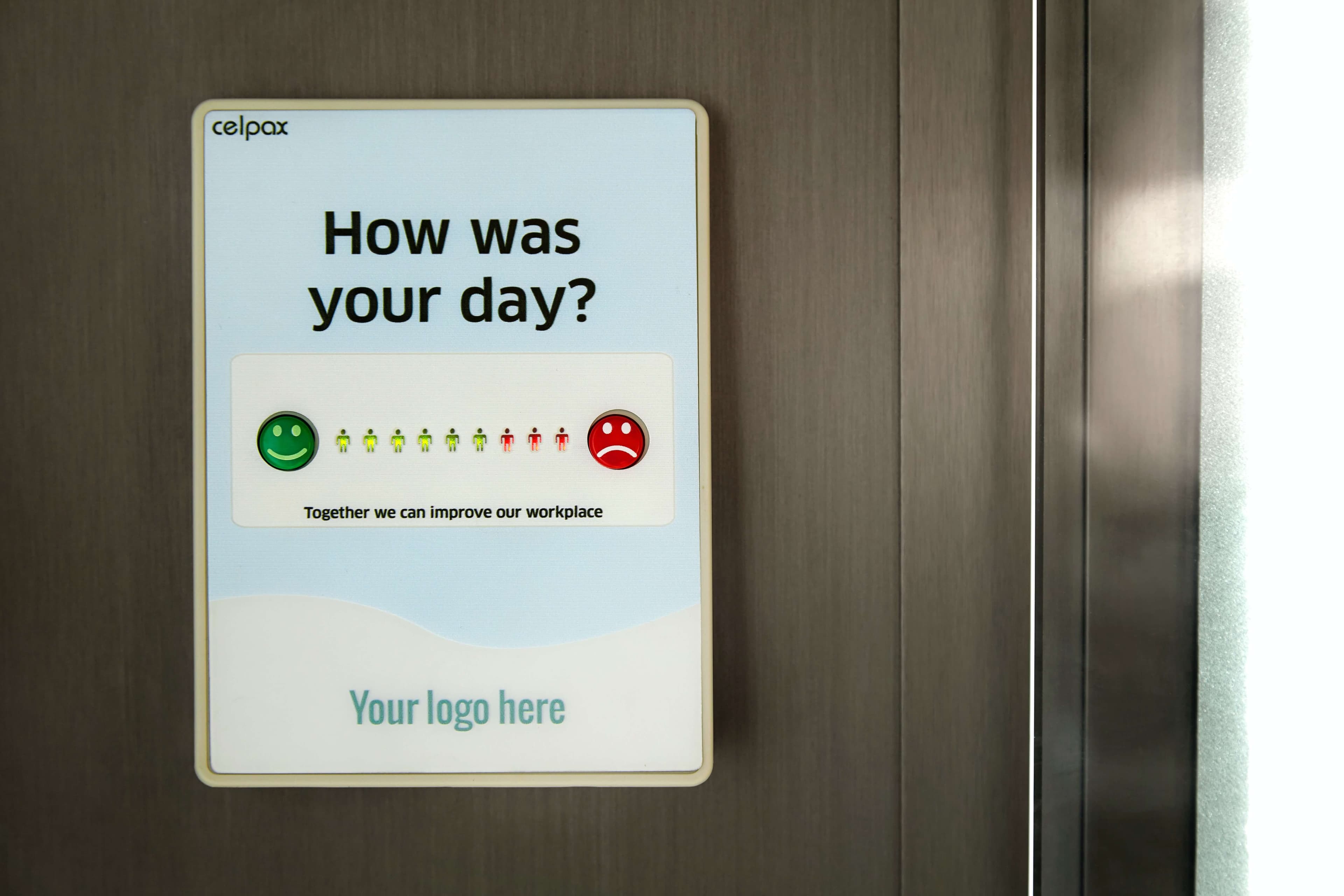With remote work becoming the norm during the pandemic and, for many companies, here to stay permanently, regularly checking in with employees has become more important than ever.
This is where the employee pulse survey comes in. Shorter and more frequent than the more traditional annual employee engagement survey, the pulse survey usually consists of just 5-15 questions and can provide a valuable source of feedback for things like employee satisfaction, work environment, relationships, and so on.
In short, it allows you to keep your finger on the "pulse" of your team and keep track of any changes, issues, or areas that need improvement.
In this article, we'll look deeper into the employee pulse survey, discussing its various uses and advantages, how often it should be used, and giving some examples of pulse survey questions and structure. But first, let's go over the basics.
What is an employee pulse survey?
Most businesses will be familiar with the employee engagement survey, which is usually held annually and gives an in-depth view into the overall workings of your team. The employee pulse survey complements this by providing short, frequent check-ups that track your most important issues at regular intervals - usually monthly or quarterly.
Currently, 90% of organizations use the traditional large-scale engagement surveys, but only 19% are taking advantage of informal pulse surveys throughout the year
The main differences between engagement surveys and staff pulse surveys are their length, frequency, and content. While an engagement survey will have specific topics to measure, pulse surveys are more agile and flexible, allowing you to gauge a variety of relevant metrics and sentiments and bringing a higher level of engagement and inclusion within your organization.
What are the advantages of pulse surveys?
As you are already beginning to understand, there are many benefits of the employee pulse survey. With 65% of employees saying that they want more feedback and engagement at work, pulse surveys are the perfect way to initiate conversations and let employees know that you are listening to them.
Higher employee engagement brings a range of benefits of its own. Employees are naturally more inclined to be satisfied working in an organization that they feel a part of, and where their opinions are valued. This is reflected in the overall profitability of a business, with the companies enjoying the highest levels of employee engagement being 22% more profitable than those with low levels of engagement.
Another major advantage of the employee pulse survey is its frequency. While annual engagement surveys are great, giving you all kinds of actionable data and insights into your team, there is a lot that can happen throughout the year that you might be missing.
For example, you've implemented a new bonus scheme for your employees. How do they feel about it? Is it motivating? Is it fair? Has it been implemented well? Rather than wait a few months to find out (by which time it could have caused major issues), an employee pulse survey will let you quickly gauge reactions, and allow you to respond accordingly.
Employees value open communication and a safe channel where they can register any concerns/issues that they might have. A regular employee pulse survey is the perfect solution to this, but be mindful not to check the frequency. If you hold pulse surveys too often, they can lose their effectiveness as employees grow tired of them.
It's also important to act upon the feedback that you receive. If employees don't see tangible results from your employee pulse surveys they can begin to have the opposite effect and become discouraging. Only hold pulse surveys when you are confident that you have the time and resources to act upon them.
Why use pulse surveys?
Pulse surveys are great for enquiring about anything that matters to employees, management, or the business as a whole. They are commonly used for things like:
Measuring the effectiveness of a particular strategy: like in the example above, when implementing certain strategies throughout the year, pulse surveys are ideal for finding out how they were received by employees and learning what areas can be improved upon.
Finding issues before they become a problem: Being able to quickly identify and resolve any concerns that employees might have will improve your employee retention and lead to a closer, happier team.
To understand your employees' experience and relationships: This can be especially important for remote teams who lack the social aspect and ready support of an office environment. With team bonding, shared lunch breaks, and after work drinks sorely missed by some, new ways must be found to build strong working relationships between team members.
Example pulse survey questions
There are no rules on what kind of questions to ask in your employee pulse survey, feel free to ask anything that you feel is important for your business. That said, there should be some consistency in your questions over time if you wish to track changes in sentiment from month-to-month or quarter-to-quarter.
Pulse surveys require the allocation of valuable employee time and company resources so keep your questions relevant to all of your employees, and make them largely actionable.
For example, asking a simple yes/no question like "are you satisfied with your current role?" can give you an idea of the general happiness of your team at any given time. But asking "why are you satisfied/unsatisfied with your current role?" will give you more actionable insights, enabling you to learn what works well and where common problems arise.
Aim for around 70% of your questions to be actionable, with the remaining 30% made up of outcome-based questions (eg. what can be done to improve communication between team members?) and one open-text question that is not influenced by the researcher and allows for free comment (eg. do you have any additional comments?)
Most employee pulse survey questions will encompass some of the following metrics:
Employee engagement: This is the main motivation for the majority of employee pulse surveys. Simple questions like "I'm happy to work at this company" followed by a scale of responses ranging from "I disagree" to "I agree strongly" is a popular example of an employee engagement question.
Response to change: It's important to measure employee response during and after periods of restructuring and change. Questions like "were changes effectively communicated by the company?" and "how have the changes affected your work?" are good examples here.
Follow-ups from previous surveys: It's important to know whether your employee pulse surveys are effective and well-received by your employees and if they are seeing any results from them. A scaled response to the statement "issues I have raised in previous surveys have been acted on" is a good way of finding out if you are taking adequate action on the results of your surveys.
Here are a few example questions to get you started. There are various ways to scale responses, from numbers (from 1 to 10, for example), to different levels of agreement (I strongly agree, I agree, neutral, I disagree, I strongly disagree, etc.).
How happy are you at work?
I get adequate feedback and recognition for my work
I have a good work/life balance
I feel safe and comfortable giving my opinions to management
The company's values are closely aligned with my own
I'm given the chance to learn and grow in my role
My work is meaningful and important
I have all the tools I need to perform at my very best
What can be done to make your work experience better?
Do you have any additional comments?
How long should a pulse survey be?
Keep your business pulse surveys short and focused. While there are no set rules here, a monthly survey can contain anywhere from 3-10 questions. If you choose to hold your employee pulse surveys quarterly, you could expand this to 10-15 questions. Bi-annual surveys can be larger still, with anywhere from 15-25 questions.
Much depends on the kind of questions that you ask. If you choose to use a series of statements followed by scaled "I agree/disagree" responses, you can include more. But if you are asking questions that demand specific, descriptive responses, then it's recommended to keep the number of questions to a minimum.
How often should pulse surveys be used?
This depends on a variety of factors, from the needs of the company in gauging employee sentiment to time and resources available and how quickly the company is able to act on their findings.
For example, if you are looking to measure employee relationships, this can be done frequently because new employees can come and go, and relationships are dynamic, changeable phenomena. But if you are looking to measure the effectiveness of your work tools, for example, this likely won't change as quickly so frequent checkups are less important.
You should also keep in mind your capacity to communicate and act upon the results of your employee pulse survey. Because employees who are subject to frequent checkups without any real, tangible feedback and results from them can quickly become discouraged, irritated, or even worse, distrustful of your surveys. It's easy to understand that being asked for personal opinions for no apparent reason could be interpreted as a form of spying or control.
Of course, not every survey will require action - sometimes everything will be fine and there is no need to follow up. In this case, still take the time to thank your employees for their participation, and clearly communicate any positive results that you might want to share.
Wrap up
From a large enterprise to a small business, pulse surveys are a great way to keep in touch with the overall engagement, happiness, and productiveness of your employees. However, there are a few important things to consider before deciding to make them a part of your strategy.
Only hold your employee pulse surveys when they are needed, relevant, and you have the time and resources at your disposal. It is essential to act on the results of your surveys when it's feasible to do so, and clearly communicate results to your team.
Because while this tool is incredibly useful, it's also an easy one to overuse if you're not careful!



